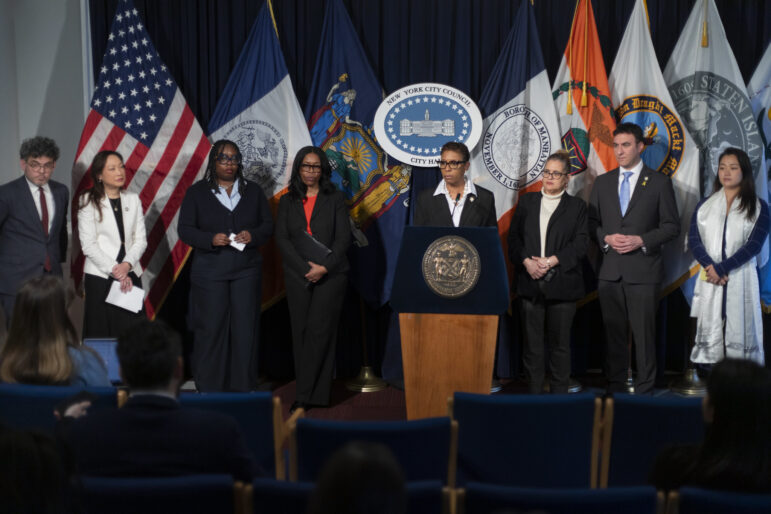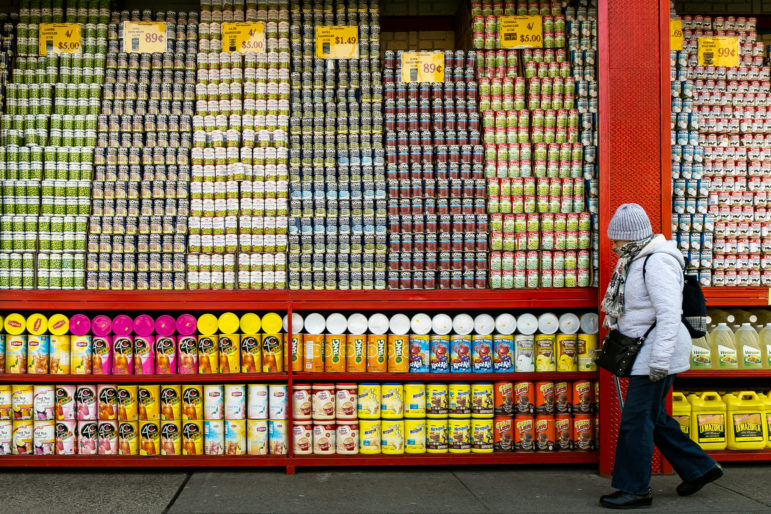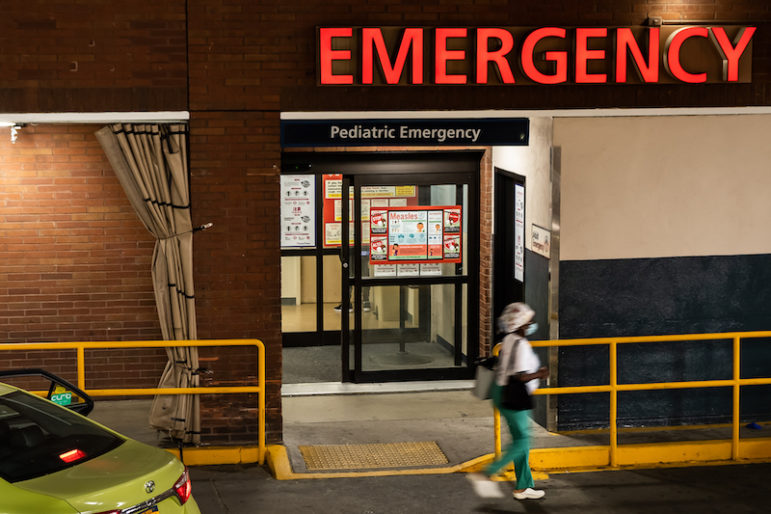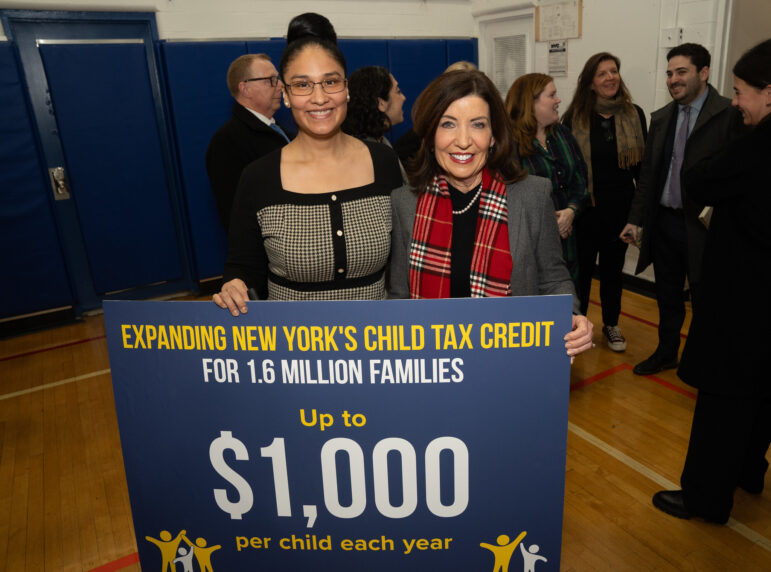Photo by: NYCLU
An NYPD officer films a protest. A 2004 policy change that permitted wider police videotaping of political protests raised questions about why such films were being made and how they’d be used.
When the NYPD began videotaping the protests Walter Liddy attended during the 2004 Republican National Convention, Liddy felt a chill. “This videotaping unquestionably had an intimidatory effect in that it deterred union members from participating in the protests who would have otherwise attended,” Liddy wrote in an affidavit filed in a lawsuit against the police department. He added that he believes “others … were deterred from participating—and in fact did not participate” because of the videotaping. The end result, Liddy said, was that the protesters’ message was diluted.
Liddy isn’t the only protester during or since the RNC to take offense at police officers’ videotaping of legal protests. What’s different about Liddy is that he’s a police officer himself.
A 26-year veteran of the NYPD and a Patrolmen’s Benevolent Association trustee, Liddy is part of a lawsuit launched by the PBA and several other uniformed service unions against the NYPD for sending officers to videotape their protests during the RNC, when they demonstrated for better wages. It wasn’t just that “videotapes were being compiled that documented off-duty officers’ political activities and could be watched by senior members of the Police Department (and even lead to possible disciplinary actions against the protesters),” Liddy wrote. It was that “the fact that the Internal Affairs Bureau of the Police Department—which is charged with investigating corruption and serious misconduct by police personnel—videotaped many of our protests.”
The unions’ suit is one of two federal court challenges to NYPD videotaping of protests, which became much more frequent after 2002 and has been seen at everything from Critical Mass bike rides to anti-war protests to rallies by advocates for the homeless. The other court challenge to police videotaping is occurring under the Handschu guidelines, a set of restrictions on police investigations of political activity.
On September 10, 2004—right after the RNC—the NYPD issued Interim Order 47, which created a system for police commanders to approve videotaping of protests, requiring merely that the taping have a “permissible operational objective.” This standard was not particularly stringent: If a videotape were “deemed potentially beneficial or useful,” it met the test. The tapes would be held for at least one year and then, the order says rather vaguely, “may be destroyed.”
A back-and-forth battle has raged over those rules for more than three years. The lawyers who monitor the Handschu case on behalf of the plaintiffs of three decades ago asked Judge Charles Haight in 2005 for an injunction blocking the videotaping order. They argued that the videotaping policy could chill political expression and that the police department’s policy of keeping videotapes for at least a year violated the Handschu rules. The NYPD countered that videotaping was constitutional.
One key part of Interim Order 47 was a reminder that, per Handschu, any investigations of political activity be approved by the Intelligence Division. The Intelligence Division told Haight in 2006 that it had received no requests to film protests. Yet videotaping had occurred at dozens of them. Haight indicated that he found that fact odd. In February 2007, Haight found Interim Order 47 to be constitutional but said that some videotaping—of homeless advocates and peace activists—under the order had violated the Handschu guidelines. The city appealed, and in June 2007, Haight swung back the other way, saying that the NYPD could only be found in contempt for violating the Handschu guidelines if it violated the Constitution itself.
In his latest ruling, in December 2007, Haight noted that “brush fires of controversy continue to burn” after his previous opinion and that the NYPD had pressed for even more latitude than Haight granted it in June. The judge shot the department down. And he ordered the NYPD to turn over documents generated by the police department under Interim Order 47; the department was complying this spring.
There are separate questions about what the NYPD does with the videos it has. At least one of the criminal cases against RNC protesters was thrown out after it emerged that video evidence presented by the Manhattan district attorney had been edited to exclude images that helped the defendant. In another case, after a private citizen’s video emerged that contradicted a police officer’s testimony, the DA investigated the cop for lying about the circumstances of an arrest, but declined to press charges.
Meanwhile, the judge in the PBA case is considering motions by both sides to end the case in their favor.








